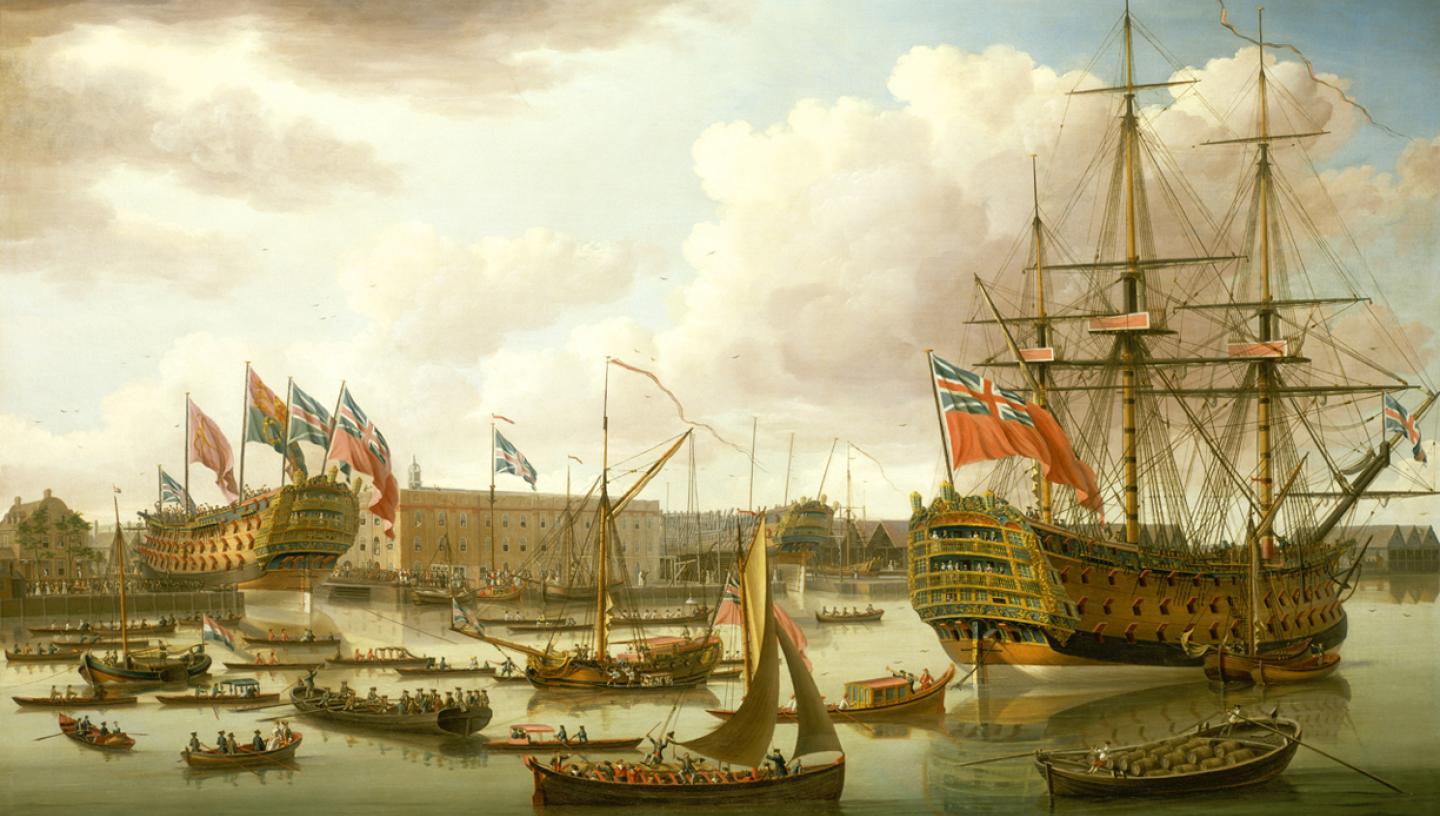
England's Royal dockyards
The first Royal dockyard was constructed during the reign of King Henry VII, when trade between continents was burgeoning.
The first Royal dockyard was built by King Henry VII at Portsmouth in 1496. The King wanted to build large ships that could carry exported goods, like woollen cloth, for trade across the world. Portsmouth was well placed for crossing the English Channel.
London’s Royal dockyards at Woolwich and Deptford
In 1513 King Henry VIII decided to build two new dockyards on the Thames to strengthen England’s resilience against foreign threats, in particular from France and Spain. Woolwich and Deptford were identified as ideal locations because they were situated in London where it was easy to get arms, supplies for building ships and a ready labour force. They were also close to the King’s Palace at Greenwich.
Running Royal dockyards
By the 18th century there were six Royal Navy dockyards in England: at Deptford, Woolwich, Chatham, Sheerness, Portsmouth and Plymouth.
The Navy Board, established by Henry VIII, was responsible for running the Royal dockyards and the repair and building of all naval warships. The principal officers at each yard were:
- Master Shipwright: Responsible for most workmen and all construction and repair work.
- Master Attendant: Managed the ships in harbour and saw to the maintenance of the ships in Ordinary ie. when the ship was laid up.
- Clerk of the Cheque: Mustered the workmen, looked after expenses and kept accounts of earnings.
- Clerk of the Survey: Checked the details of all stores received and issued and surveyed materials.
- Clerk of the Ropeyard: Mustered the men, and received and issued stores at Woolwich, Chatham, Portsmouth and Plymouth.
Royal Dockyard Volunteers
The idea of forming a militia of Royal Dockyard workmen was first raised by Lord Ellenborough, the First Lord of the Admiralty, in 1846. England’s dockyards began raising their battalions in the summer of 1847.
The force totalled some 10,500 men unevenly divided into artillery and infantry. Captain Bartholomew James Sulivan was appointed Colonel and Chief of Staff of the volunteers, and was instructed to submit a plan for the systematic reorganisation of the battalions. Financial difficulties and the Naval Lords' indifference to the scheme led the battalions to be disbanded in the summer of 1848.
The decline of Royal dockyards at Woolwich and Deptford
The position of Deptford and Woolwich on the tidal section of the Thames meant these docks gradually filled up with silt from the river. There was also very little room to expand the dockyards as the local towns grew and began to encroach on their boundaries.
As Deptford and Woolwich declined in importance, other Royal dockyards such as Chatham and Plymouth took over large-scale shipbuilding. The dockyards at Deptford and Woolwich functioned to undertake repair work until they closed in 1869.
Using our collections for research
The collections at Royal Museums Greenwich offer a world class resource for researching maritime history, astronomy and time.